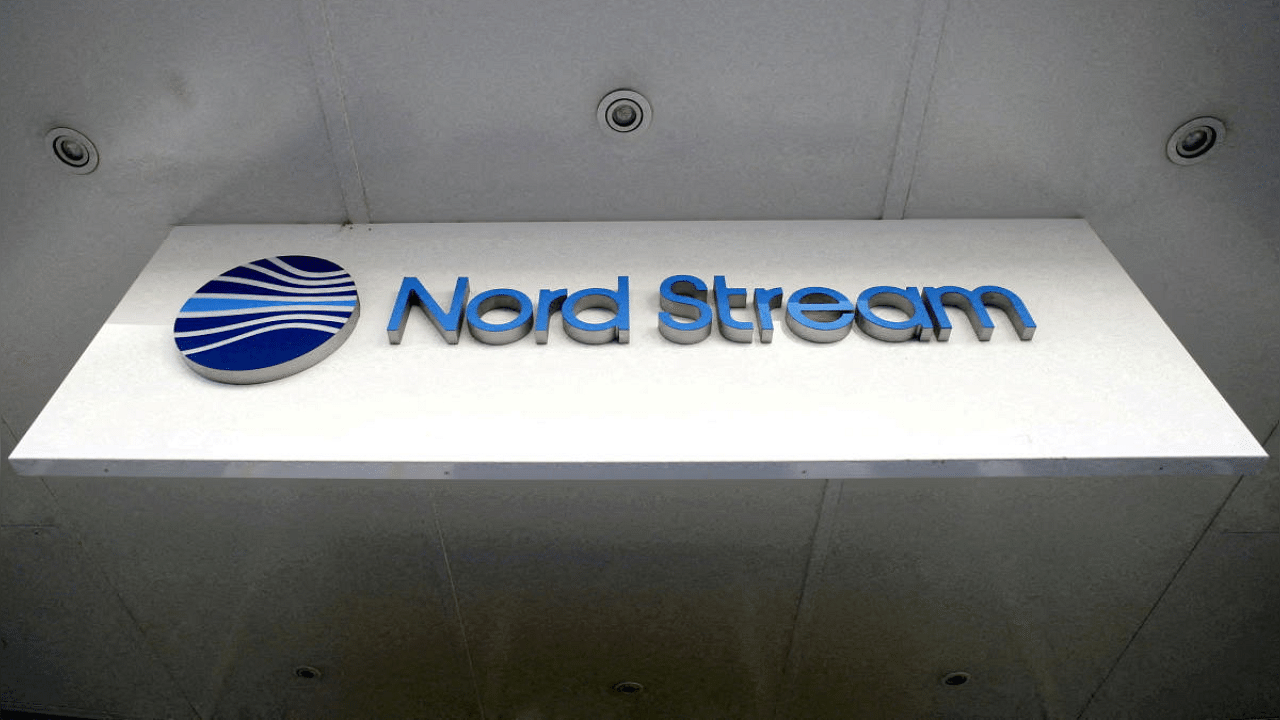Tiny amounts of gas appear in ruptured Nord Stream 1 pipeline, website data showsThe pipeline ruptured in the Baltic Sea
Last Updated IST

The logo of Nord Stream as seen at their headquarters. Credit: Reuters Photo
Tiny amounts of gas suddenly appeared in the Russian Nord Stream 1 pipeline on Wednesday, website data showed, weeks after the pipeline ruptured in the Baltic Sea in what investigating teams said was suspected sabotage caused by explosions.
Gas flows were at 102 kilowatt-hours per hour (kwh/h) between 0700-0800 CET on Oct. 19 from zero, and at 119 an hour later, the data showed.
Nord Stream's operator did not respond to a request for comment and no explanation was immediately available.
Dwindling flows of gas from Russia, which once supplied 40 per cent of Europe's needs, left the European Union struggling to unite over how to respond to surging prices that have deepened a cost-of-living crisis for families and businesses.